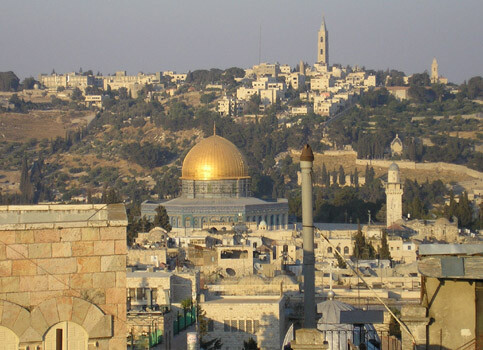United Nations Educational, Scientific and Cultural Organization (UNESCO) 26 January 2005

In 685AD the Umayyad Khalif, ‘Abdul Malik ibn Marwan, commenced work on the Dome of the Rock. Essentially unchanged for more than thirteen centuries, the Dome of the Rock remains one of the world’s most beautiful and enduring architectural treasures. (Arjan El Fassed)
UNESCO Director-General Koïchiro Matsuura today opened the first meeting of a Committee of Experts on the Cultural Heritage of the Old City of Jerusalem, a site inscribed on UNESCO’s World Heritage List in 1981 by virtue of its outstanding cultural value.
The opening session was held in the presence of the Permanent Delegates of UNESCO’s Member States and Norway’s Minister of Culture and Church Affairs, Valgerd Svarstad Haugland. The President of UNESCO’s General Conference, Michael Abiola Omolewa, and the Chairman of UNESCO’s Executive Board, Hans-Heinrich Wrede also addressed the opening session.
In his address, the Director-General welcomed the fact that it was now possible for the Organization to start working on the preparation of a “comprehensive proposal in a spirit of cooperation with all the concerned parties” for the safeguarding of the cultural heritage of the Old City of Jerusalem, an issue that has been on the agenda of UNESCO’s governing bodies since 1967.
The Committee of Experts numbers 12 internationally renowned architects, archeologists, curators, restorers, architectural historians and structural engineers with professional knowledge of the Old City of Jerusalem, which Mr Matsuura described as presenting “an outstanding combination of historic, artistic and spiritual values.”
“More than any other place in the world,” Mr Matsuura said, “Jerusalem embodies the hope and dream of dialogue between cultures, civilizations and spiritual traditions, a dialogue through which mutual understanding between peoples may flourish. Deep at the heart of UNESCO’s mission lies the commitment to create the conditions for genuine dialogue based upon respect for shared values and the dignity of each civilization and culture.”
In keeping with a resolution of UNESCO’s General Conference of 2003, the experts meeting at UNESCO today are expected to advise the Director-General on the elaboration of a comprehensive Plan of Action to safeguard the cultural heritage of the Old City of Jerusalem and to provide him with guidelines and proposals for its implementation.
UNESCO sent a high-level mission to Jerusalem in March 2004 to assess the state of conservation of the Old City. The process now underway marks a new turn for UNESCO, which hitherto had to limit its interventions to selected initiatives on specific monuments and monitoring missions.
UNESCO is the United Nations standard-setting organization in charge of heritage preservation. It also implements the 1954 Convention for the Protection of Cultural Properties in the Event of Armed Conflict, also known as the Hague Convention, and the 1972 Convention for the Protection of the World Cultural and Natural Heritage (the World Heritage Convention).
“The stakes are considerable,” the Director-General concluded, “not only for the cultural heritage of the Old City but also for advancing the cause of dialogue among peoples and civilizations. It is my sincere hope that UNESCO will be able to reaffirm that the cultural heritage of the Old City of Jerusalem is indeed a shared value and that its safeguarding is a cause around which the parties concerned are willing to cooperate, with the full support of the international community.”
Related Links